Fraser Institute
Carney government should scrap gun ‘buyback’ program and save taxpayer money
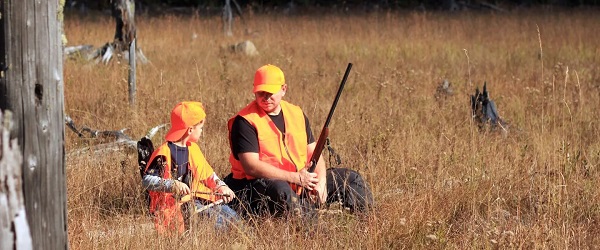
From the Fraser Institute
By Gary Mauser
More than 90 per cent of guns used in crimes are illegally imported into Ontario from the United States, which means the confiscation (or “buyback”) program would not affect these guns. And the program diverts financial and policing resources towards law-abiding Canadians who own firearms
Given the mountain of federal debt, the Carney government’s much-anticipated fall budget should tell us how Ottawa plans to deal with the prime minister’s new priorities. Carney has urged cabinet to find existing programs to cut so Ottawa can afford the new spending he’s promised, such as meeting the NATO 5 per cent commitment and opening up new energy corridors.
Clearly, if the government wants to cut waste, it should axe the Trudeau-era gun ban and confiscation program, which—according to reports—the government plans to fully rollout this fall.
First, some background. In 2020, with the stroke of a pen, the Trudeau government instantly made it a crime for federally-licenced firearms owners to buy, sell, transport, import, export or use hundreds of thousands of formerly legal rifles and shotguns. According to the government, the ban targets “assault-style weapons,” which are actually classic semi-automatic rifles and shotguns used by hunters and sport shooters for more than 100 years. When announcing the ban, the prime minister said the government would confiscate the banned firearms and provide “fair compensation” to owners. That hasn’t happened.
In fact, the government has revealed no plans about how it will collect the banned firearms nor has it included compensation costs in any federal budget. The amnesty period (to allow compliance with the ban), which the government has extended in the past, is set to expire on Oct. 30, 2025.
The program faces stiff opposition from several key players.
For example, the provincial governments in Ontario and Saskatchewan don’t want to participate. As noted by Ontario’s solicitor general, more than 90 per cent of guns used in crimes are illegally imported into Ontario from the United States, which means the confiscation (or “buyback”) program would not affect these guns. And the program diverts financial and policing resources towards law-abiding Canadians who own firearms and are already heavily regulated and screened.
The National Police Federation, which represents 20,000 RCMP members, has said the program is a “misdirected effort when it comes to public safety.”
Canada Post, which has been tasked by Ottawa to receive and warehouse firearms, wants nothing to do with the program due to fear of conflicts between staff and gun owners, and the ability of Canada Post to safely store potentially hundreds of firearms in postal substations.
And the Canadian Sporting Arms and Ammunition Association, which represents firearms retailers, said it will have “zero involvement” in helping confiscate these firearms.
Meanwhile, there’s no evidence the program will improve public safety.
In fact, Canadian firearms owners are exceptionally law-abiding and less likely to commit murder than other Canadians—and that shouldn’t be surprising. To own a firearm in Canada, you must obtain a Possession and Acquisition Licence (PAL) from the RCMP after initial vetting and daily monitoring for possible criminal activity. Between 2000 and 2020, an average of 12 PAL holders per year were accused of homicide, out of approximately 2 million PAL holders. The number of PAL holders increased from 1,979,054 to 2,206,755 over this same time period, so the PAL holder firearms homicide rate over 20 years was 0.63 per 100,000 PAL holders. But the firearms homicide rate for adult Canadians is 0.72 per 100,000—that’s 14 per cent higher than the rate for PAL holders.
Even the minister in charge of the program—Gary Anandasangaree, the Carney government’s public safety minister—seems to think it’s a bad idea. In an audio recording released online, he said: “I just don’t think municipal police services have the resources to do this” before adding that the program’s goals may be more about politics than sound policy.
So, with a federal budget looming, how much will the gun ban/confiscation program cost taxpayers?
The plain answer: we don’t know. But back in 2020, the Trudeau government said it would cost $200 million to compensate firearms owners for confiscating their now-banned firearms, although the Parliamentary Budget Officer said compensation costs could reach $756 million. The federal government recently said the program’s administrative costs (safe storage, destruction of hundreds of thousands of firearms, etc.) would reach an estimated $1.8 billion. My estimate, based on a similar program in New Zealand in 2019, for only compensation costs and the collection phase is closer to $6 billion.
Today, more than 150 employees of the Department of Public Safety in Ottawa are working full time on the program, yet few firearms (12,195) have been collected to-date. The program spent $67.2 million by 2024, before it collected a single gun, and is now projected to cost $459.8 million in 2025/26 alone, mainly on public opinion surveys and planning. Basically, they’re trying to figure out how to confiscate and destroy hundreds of thousands of guns from across Canada. Apparently, this planning costs hundreds of millions of dollars.
In sum, Ottawa’s gun ban/confiscation (“buyback”) program is very expensive and likely won’t achieve its stated goals of improving public safety. If the Carney government wants to find savings, the program is good place to start.
Energy
Mistakes and misinformation by experts cloud discussions on energy

From the Fraser Institute
By Jason Clemens and Elmira Aliakbari
The new agreement (MOU) between the Carney and Alberta governments sets the foundation for a pipeline from Alberta to the British Columbia coast, at least conceptually. Unfortunately, many politicians and commentators, including the bureau chiefs for the Globe and Mail and Toronto Star, continue to get many energy facts wrong, which impairs the discussions of how best the country can and should move forward to capitalize on our natural resources.
For example, commentors often wrongly describe the tanker ban on the west coast (C-48) as a general ban on oil tankers. But in reality, the law only applies to tankers docking at Canadian ports. It does not and cannot prevent tankers from travelling the west coast so long as they’re not stationing at Canadian ports. This explains the continued oil tanker traffic in the northwest region for tankers docking in U.S. ports in Alaska. Simply put, there is not a general tanker ban on the west coast.
Commentators also continue to misrepresent the current capacity on the expanded Trans Mountain pipeline (TMX). According to the Canada Energy Regulator (CER), the average utilization of the TMX since it came online in June 2024 is 82 per cent (reaching as high as 89 per cent in March 2025). So, while there’s some room for additional oil transportation via TMX, it’s nowhere close to the “doubling” being discussed in central Canada. Critically, though, according to the CER, from “June 2024 to June 2025, committed capacity was effectively fully utilized each month, averaging 99% utilization.”
Similarly, there’s a misunderstanding by many in central Canada regarding the potential restart of the Keystone XL pipeline, which apparently President Trump is keen on. Keystone would not diversify Canada’s exports because while oil does make its way down to the southern U.S. where it can be exported, the actual sale of Canadian oil is to U.S. refineries, so our reliance on the U.S. as our near-sole export market would continue unless a west and/or east coast pipeline is developed.
There also continues to be an artificial and costly connection made between Ottawa removing the arbitrary emissions cap on greenhouse gases by the oil and gas sector and the approval of a new pipeline with the proposed Pathways carbon capture project, which is a collaboration between five of Canada’s largest oil producers. This connection was galvanized in the MOU.
The idea behind the project is to reduce (conceptually) the amount of greenhouse gas (GHG) emitted from oil extraction and transportation projects linked with Pathways. The Pathways project produces no economic value or product—it simply collects and stores GHG emissions—and reports suggest the total cost for the first phase of the project will reach $16.5 billion.
Should Canadians care about adding costs related to GHG mitigation? There are several factors to consider. First, Canada is already a low-GHG emitting producer of oil. According to the Carney government’s first budget (page 105, chart 1.5 which ranks the world’s 20 top oil producers based on their GHG emissions per unit of output), Canada already ranks 7th-lowest in terms of emissions. And more importantly, it’s lower than every country—Venezuela, Russia, Iraq and Mexico—that produces a similar type of oil as Canada. Any resources spent further reducing GHG emissions via carbon capture will result in small incremental gains contrasted with large costs (again, at least $16.5 billion). A number of analysts have already raised concerns about the investment and competitiveness implications of increasing the cost structures for Alberta producers.
Second, according to the federal government, in 2022 Canada produced 1.4 per cent of global GHG emissions, and the oil and gas sector produced roughly one-quarter of those emissions. In other words, if Canada eliminated all GHG emissions from the oil sector via carbon capture, the process would consume vast amounts of scarce resources (i.e. money) and result in a nearly undetectable change in global GHG emissions. One can only conclude that this is much more about international virtue-signalling than the actual economics and environmental implications of Canada’s potential energy projects.
At a time when Canada is struggling with crisis levels of private business investment, falling living standards and as the Bank of Canada described, a break-the-glass crisis in productivity growth, it’s clearly not wise to spend tens of billions of dollars on projects that might make politicians and bureaucrats feel better and enable them to use near Orwellian language like “zero-emissions oil” but that actually deliver almost no detectable environmental benefits.
To borrow our prime minister’s favourite phrase, kickstarting Canada’s oil and gas sector is the easiest way to catalyze economic growth given our vast energy reserves, know-how in the sector, and high productivity. To do so, we need a national dialogue rooted in facts.
Energy
Ottawa and Alberta’s “MOU” a step in the right direction—but energy sector still faces high costs and weakened competitiveness
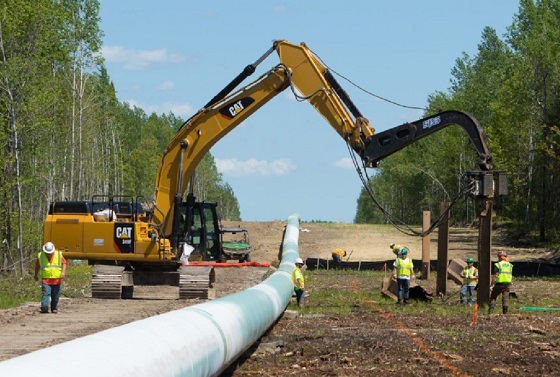
From the Fraser Institute
By Tegan Hill and Elmira Aliakbari
The Memorandum of Understanding (MOU) between Alberta Premier Danielle Smith and Prime Minister Mark Carney, which includes a new oil pipeline to BC’s northwest coast, offers some hope for Canada’s energy future. While this agreement is a step in the right direction, it puts Alberta’s energy sector on the hook to secure access to new markets while facing higher costs and reduced competitiveness.
Earlier this year, Smith demanded then-newly elected Prime Minister Carney repeal nine “bad laws” stifling oil and gas investment, which has collapsed by nearly 61 per cent in the province since 2014, falling from $64.7 billion to $25.4 billion in 2024 (inflation-adjusted).
One key policy on the list was the proposed federal emissions cap, which would have applied exclusively to the oil and gas sector. According to the MOU, Canada will not move forward with the cap, which is a welcome change. Indeed, multiple analyses showed that the cap would have inevitably resulted in a production cut, costing the economy billions and resulting in tens of thousands of job losses. And, with oil and gas demand continuing to climb, the cap would have shifted production to other countries with lower environmental and human rights standards such as Iran, Russia and Venezuela.
Scrapping the Clean Electricity Regulations (CER) was also one of Smith’s demands. While the MOU states that “Canada and Alberta remain committed to achieving net zero greenhouse gas emissions by 2050”, the CER as it applies to the province will be suspended for the time being. Again, this is a critical and positive change for a province where 85 per cent of its electricity comes from fossil fuels—a larger share than nearly any other province. (For perspective, in Quebec, over 85 per cent of its electricity comes from hydro.) The Alberta Electric System Operator (AESO) estimates it would cost $44 to $54 billion to decarbonize Alberta’s grid by 2041—a 30 to 36 per cent spending increase—costs that ultimately fall on consumers.
A third key policy on Smith’s list of nine bad laws was repealing Bill C-48, which banned large oil tankers off BC’s northern coast from docking in Canadian ports. According to the MOU, there may be a limited exemption to the ban. Specifically, it states that to enable the export of bitumen there may be an “appropriate adjustment.” The law effectively prevents Canadian producers from accessing Asia and other international markets. Crucially, the legislation applies only to tankers docking in Canadian ports—U.S. and foreign tankers continue to operate freely in the same waters accessing U.S. ports. In other words, the law exclusively hinders Canada’s competitiveness—creating a carve out for one pipeline will not fix this problem.
All of these policy changes or exemptions are conditional on stronger industrial carbon pricing and support for the massive multibillion-dollar Pathways project–a 400-kilometer pipeline transporting carbon trapped at oil facilities to an underground storage facility near Cold lake Alberta and led by a group of Canada’s five largest oil companies. Earlier this year, Alberta froze its industrial carbon tax at $95 per tonne through 2026, but the MOU states that the system will ramp up to a minimum price of $130/tonne. This will increase the cost of producing, processing and transporting oil, at a time when a surge in global oil production and downward pressure on oil prices is expected. Ultimately, this will widen the competitiveness gap between Alberta and many other jurisdictions, such as the United States, that do not have comparable carbon pricing in place.
The agreement is also conditional on the $16.5 billion (minimum estimate) Pathways project to capture, sequester and store carbon underground. Adding carbon capture technology would increase production costs by roughly US $1.2-$3 per barrel for oil sands mining operations and US $3.6-$4.8 for oil sands facilities that use steam. These higher costs further erode the province’s competitiveness and won’t help in attracting private sector investment.
The memorandum of understanding makes some important strides for Canada’s energy future and is certainly an improvement on the status quo, but it still leaves Alberta’s energy sector facing higher costs and weakened competitiveness, and more broadly doesn’t remove the many impediments to large-scale development of our oil sector.
-

 Business2 days ago
Business2 days agoBlacked-Out Democracy: The Stellantis Deal Ottawa Won’t Show Its Own MPs
-

 Agriculture2 days ago
Agriculture2 days agoHealth Canada pauses plan to sell unlabeled cloned meat
-

 Crime2 days ago
Crime2 days agoB.C.’s First Money-Laundering Sentence in a Decade Exposes Gaps in Global Hub for Chinese Drug Cash
-

 Crime2 days ago
Crime2 days agoFBI Seizes $13-Million Mercedes Unicorn From Ryan Wedding’s Narco Network
-

 International2 days ago
International2 days agoAmerica first at the national parks: Trump hits Canadians and other foreign visitors with $100 fee
-
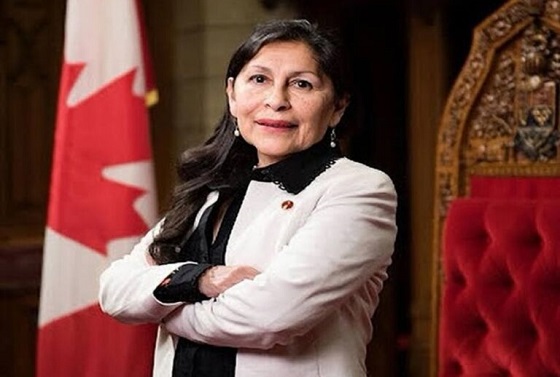
 Banks2 days ago
Banks2 days agoThe Bill Designed to Kill Canada’s Fossil Fuel Sector
-
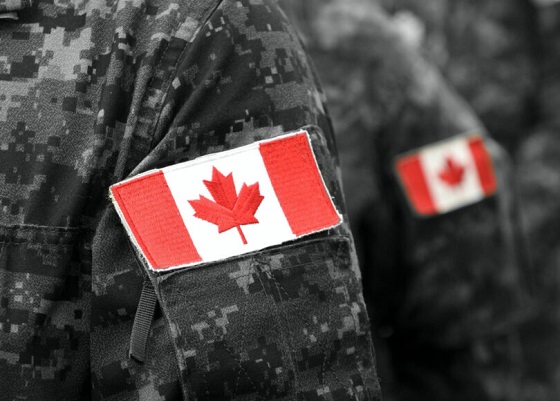
 armed forces1 day ago
armed forces1 day ago2025 Federal Budget: Veterans Are Bleeding for This Budget
-
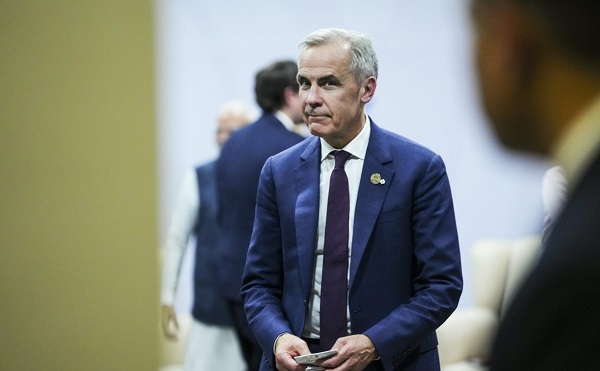
 Business2 days ago
Business2 days agoFederal major projects list raises questions








